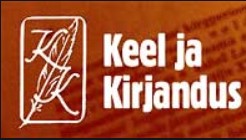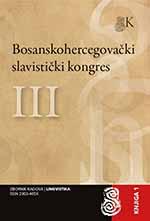Meie ja teie eesti kirjakeel
Estonian national identity is nowadays based on standard literary Estonian. The article discusses which groups of people may have shared the knowledge and development of Estonian earlier in history and what the developers’ aims and options were in the 19th century, during the preliminary and early phases of national awakening. Early modern times was the period of the growth of ethnic and linguistic confrontations underpinning the emergence of natonal self-awareness. For several historico-political and socio-cultural reasons the task of developing written Estonian befell native German (and Swedish) pastors in the 16th–18th centuries. Their Estonian competence varied and their attitudes to the peasant language differed, but even for the most talented of them the language was foreign, not native. As a result, the 19th century witnessed a particularly sharp conflict between the artificial, German-like learned version of Estonian and the vernacular one. The connotations of the two usages can be inferred from a comparison of the linguistic behaviours of Otto Wilhelm Masing and Friedrich Reinhold Kreutzwald. Masing, who identified with German pastorship, emphasised the distance and alienness of his readers by using a particularly vernacular and idiomatic Estonian, whereas Kreutzwald, who was one of the first intellectuals to identify himself as an Estonian, used a heavy, German-like version in order to elevate his readers. The fact that it was the German-like learned Estonian that was chosen to write the texts of the national movement fits well with the colonial linguistic approach by Joseph Errington suggesting that first the colonisers created a written language for their colonised to imbibe the coloniser’s culture and religious beliefs, but at an appropriate moment the colonised community would take over and pirate the literary language developed for them, in order to use it for purposes of their own, which were quite the opposite to those of the colonisers.
More...

